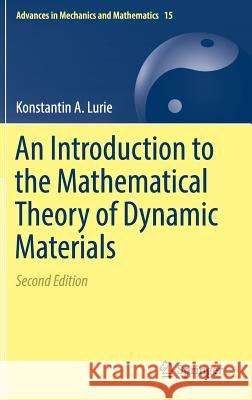An Introduction to the Mathematical Theory of Dynamic Materials » książka
An Introduction to the Mathematical Theory of Dynamic Materials
ISBN-13: 9783319653457 / Angielski / Twarda / 2017 / 277 str.
This book has emerged from the study of a new concept in material science that has been realized about a decade ago. Before that, I had been working for more than 20 years on conventional composites assembled in space and therefore adjusted to optimal material design in statics. The reason for that adjustmentisthatsuchcompositesappearedtobecomenecessaryparticipants in almost any optimal material design related to a state of equilibrium. A theoretical study of conventional composites has been very extensive over a long period of time. It received stimulation through many engineering applications, and some of the results have become a part of modern industrial technology. But again, the ordinary composites are all about statics, or, at the utmost, are related to control over the free vibration modes, a situation conceptually close to a static equilibrium. The world of dynamics appears to be quite di?erent in this aspect. When it comes to motion, the immovable material formations distributed in space alone become insu?cient as the elements of design because they are incapable of getting fully adjusted to the temporal variation in the environment. To be able to adequately handle dynamics, especially the wave motion, the material medium must itself be time dependent, i.e. its material properties should vary in space and time alike. Any substance demonstrating such variation has been termed a dynamic material 1].











